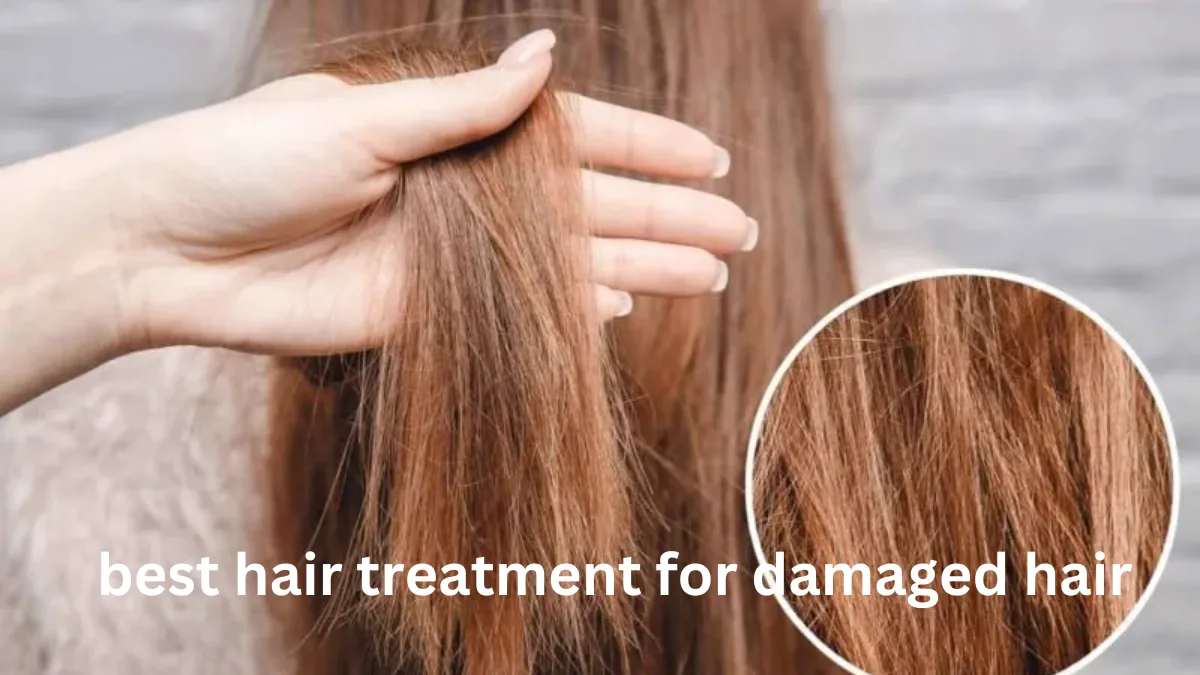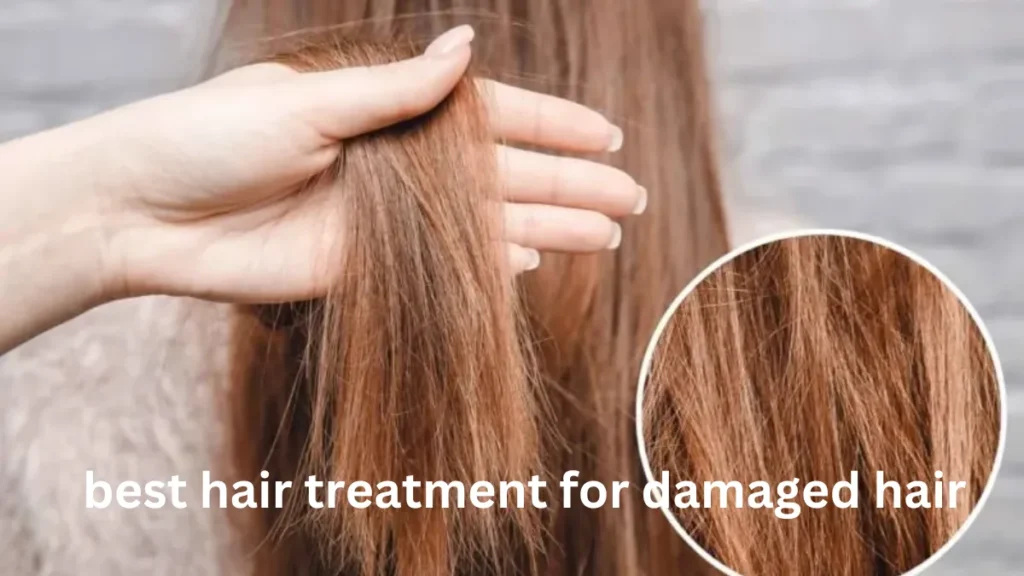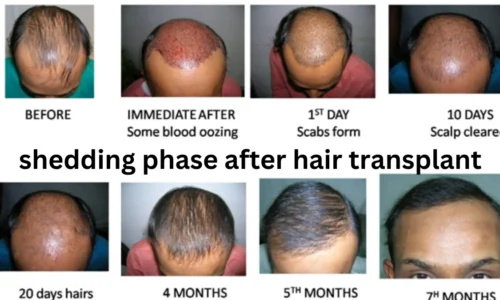

Best Hair Treatment for Damaged Hair: Hair damage is a common problem that can leave your locks looking dull, brittle, and lifeless. Whether it’s caused by over-styling, chemical treatments, or environmental factors, repairing damaged hair is essential for restoring its strength and shine. This article will guide you through the best hair treatments for damaged hair, from deep conditioning to professional salon treatments.
Book Your Consultation Today
Visit Dr. Hanan Dermatology Specialty Clinic in Padur, OMR, Chennai. Schedule your consultation today and start your journey to fuller, healthier hair.
For more information and to book your appointment, visit our clinic or call us at the clinic’s contact details.
Understanding Hair Damage
Hair damage can manifest in various forms, and it’s important to understand its causes to treat it effectively. There are three main types of hair damage:
- Physical Damage: Caused by excessive brushing, towel-drying, and using hair tools like straighteners or curling irons.
- Chemical Damage: Resulting from coloring, bleaching, or perming your hair.
- Environmental Damage: Exposure to harsh weather conditions like sun, wind, and pollution.
Symptoms of damaged hair include dryness, split ends, frizz, breakage, and thinning. Treating your hair properly can prevent further damage and restore its health.
Best Hair Treatments for Damaged Hair
Deep Conditioning Treatments
One of the most effective ways to repair damaged hair is through deep conditioning. Deep conditioners are formulated to penetrate the hair shaft and provide essential moisture and nutrients. Look for products with ingredients like shea butter, avocado oil, and keratin, which help restore hair’s strength and elasticity. Using a deep conditioner once a week can significantly improve the texture of your hair.
Keratin Treatments
Keratin treatments are a popular solution for damaged hair. Keratin is a protein naturally found in your hair, and replenishing it can help rebuild hair structure. Keratin treatments smooth frizz, repair damage, and add shine. However, while keratin treatments are effective, they can also leave your hair feeling a bit flat, so it’s important to choose a product that suits your hair type.
Hair Oils
Hair oils are excellent for nourishing and moisturizing dry, damaged hair. Argan oil, coconut oil, and olive oil are all rich in vitamins and essential fatty acids, making them great choices for repairing damage. Simply massage a few drops into your scalp and hair, and leave it on for at least 30 minutes before washing your hair. This will help seal in moisture and improve the overall health of your hair.
Hair Masks
Hair masks can be either store-bought or DIY. Store-bought masks are usually packed with vitamins, oils, and proteins that help revitalize damaged hair. For a more natural approach, you can create your own hair mask using ingredients like honey, yogurt, and avocado. Apply the mask to your hair and leave it on for 20-30 minutes to let it work its magic.
Protein Treatments
Protein treatments are essential for strengthening damaged hair. When your hair is damaged, it often lacks protein, which can make it weaker and more prone to breakage. Protein treatments help to rebuild and strengthen the hair shaft, restoring your hair’s structure. Use a protein treatment once a month to maintain your hair’s strength and prevent further damage.
Heat Protection Treatments
If you can’t avoid using heat styling tools like blow dryers, flat irons, and curling irons, it’s essential to use heat protectants. Heat protectants create a barrier between your hair and the heat, minimizing the damage caused by high temperatures. Look for products with silicones or natural oils that provide heat protection and keep your hair looking smooth and shiny.
Professional Treatments for Damaged Hair
Hair Salon Treatments
Professional salon treatments like Olaplex and Brazilian Blowouts are highly effective at repairing damaged hair. These treatments work by restoring the hair’s internal structure and bonding the broken disulfide bonds. Although these treatments can be expensive, they provide long-lasting results and are ideal for severely damaged hair.
Hair Reconstruction Services
In cases of extreme damage, hair reconstruction services may be necessary. These services help to rebuild the hair’s strength and texture by using advanced techniques to repair split ends, prevent breakage, and restore volume.
Home Remedies for Damaged Hair
For a more natural approach to hair repair, you can use several home remedies to treat damaged hair. Some of the most effective DIY treatments include:
- Coconut Oil Treatment: Apply coconut oil to your hair and leave it on overnight for intense hydration.
- Honey and Olive Oil Mask: Mix honey and olive oil for a moisturizing mask that helps seal split ends.
- Aloe Vera Treatment: Aloe vera helps soothe the scalp and restore moisture to dry, brittle hair.
Prevention Tips for Hair Damage
Preventing further damage is key to maintaining healthy hair. Here are some helpful tips to protect your hair:
- Avoid Over-Washing: Washing your hair too frequently can strip it of natural oils. Wash your hair 2-3 times a week.
- Limit Heat Styling: Reduce the use of heat styling tools, or use them on the lowest heat setting.
- Use a Wide-Tooth Comb: Instead of brushing wet hair, use a wide-tooth comb to prevent breakage.
- Protect Your Hair from Sun and Pollution: Wear a hat or use UV-protectant hair products to shield your hair from harmful environmental factors.
When to Seek Professional Help
If your hair damage is severe or if home treatments aren’t working, it’s time to consult a professional. A dermatologist or hair specialist can help determine the cause of the damage and recommend personalized treatment plans.
FAQs
1. What causes hair damage?
Hair damage can be caused by excessive heat styling, chemical treatments (like coloring and perming), environmental factors (like sun exposure), and poor hair care habits (such as over-washing or using harsh products).
2. How can I repair my damaged hair?
Repairing damaged hair typically involves using nourishing treatments such as deep conditioning masks, oils, and protein-rich products to restore moisture, strengthen strands, and improve elasticity. Regular trims are also essential to remove split ends.
3. What is a keratin treatment?
A keratin treatment is a salon procedure that helps smooth and strengthen hair by infusing it with keratin, a natural protein. It can help reduce frizz, improve shine, and make hair more manageable.
4. How often should I use a deep conditioning treatment?
For severely damaged hair, it’s recommended to use a deep conditioning treatment at least once a week. For mild damage, you can use it bi-weekly or monthly, depending on your hair’s needs.
5. Can home remedies help damaged hair?
Yes, certain home remedies like coconut oil, honey, aloe vera, and avocado masks can provide moisture and nourishment to damaged hair. However, for significant damage, professional treatments may be more effective.
6. Is there a treatment for heat-damaged hair?
Yes, using protein treatments, repairing serums, and moisturizing conditioners can help restore heat-damaged hair. Avoiding heat styling tools while your hair recovers is crucial.
7. Can damaged hair grow back healthy?
While you can’t reverse damage to existing hair, you can improve its condition with proper treatments and a healthy hair care routine. New hair growth can be healthy if you nourish your scalp and hair follicles.
8. Are salon treatments worth the investment?
Salon treatments like Olaplex or keratin treatments can significantly improve the health and appearance of damaged hair. If you have severe damage, professional treatments can provide more noticeable results than at-home products.
9. What products should I avoid for damaged hair?
Avoid harsh shampoos, products with sulfates, and those with alcohol, as these can further strip moisture from damaged hair. Opt for gentle, hydrating, and strengthening products instead.
10. How long does it take to repair damaged hair?
The time it takes to repair damaged hair depends on the extent of the damage and your hair care routine. With consistent treatments, improvements may be visible within a few weeks to a couple of months.



